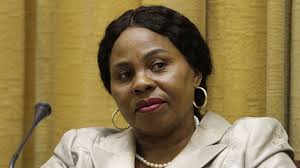Staff Reporter
Zimbabwe joined other countries in the commemorations of World Radio Day in Chiredzi yesterday. Speaking at the occasion was the Minister of Information, Publicity and Broadcasting Services, Monica Mutsvangwa, who applauded the strides Government has taken toward media reforms.
“This year we have come here to Chiredzi, to commemorate World Radio Day on the back of the giant strides that my Ministry has made in the past year in reforming the media sector.
“The major talking point was the repeal of the Access to Information and Protection of Privacy Act (AIPPA) in 2020, through the enactment of the Freedom of Information Act as well as the promulgation of the Zimbabwe Media Commission Act last year,” said Minister Mutsvangwa.
Pointing out Government achievements of ensuring all communities have radio access broadcast in their local languages, Mutsvangwa said, “We licensed 14 community radio stations, and seven campus radio stations and further licensed six privately-owned television stations comprising Jester Media Services , Acacia Media, Zimpapers, Channel Dzimbahw, Rusununguko Media and Fairtalk Communications as well as the completion of some digital terrestrial television projects which now await commissioning.”
Meanwhile, almost all of the country’s peripheral communities are now with radio stations such as, Ntepe-Manama CRT in Gwanda; Lyeja FM in Hwange; Ingqanga FM in Mbembesi; Radio Bukalanga in Plumtree; Bayethe FM Matobo; Beitbridge-Shashe CRT in Beitbriedge; Tswasumbuka FM in Binga; Nyangani FM in Nyanga; Chimanimani CRT in Chimanimani, Vemuganga CRT in Chipinge; Ndau CRT in Mahenye (Garahwa); Kazambezi FM in Kariba; Madziwa FM in Shamva and the recently commissioned Avuxeni Community Radio in Chiredzi.
Minister Mutsvangwa added that, “The establishment of Community Radio Stations will go a long way in addressing various development aspects of the society like education, health, water and sanitation, protection from natural disasters and address social issues at the community level and connect rural population with the Government.”




